Category Archives: Uncategorized
Filters
A2 PHOTOGRAPHY:
Bunker Archaeology.
Personal Investigation.

A2- Photography Bunker Archaeology
A2- Photography
Personal Investigation
Bunker Archaeology
A2 PHOTOGRAPHY
Personal Investigation
Bunker Archaeology
A2 Photography
Personal Investigation
Bunker Archaeology
A2 PHOTOGRAPHY- PERSONAL INVESTIGATION
BUNKER ARCHAEOLOGY
Essay: Private/Public Archives
What Are Archives?
In the course of daily life, individuals and organizations create and keep information about their personal and business activities. Archivists identify and preserve these documents of lasting value.
These records — and the places they are kept — are called “archives.” Archival records take many forms, including correspondence, diaries, financial and legal documents, photographs, and moving image and sound recordings. All state governments as well as many local governments, schools, businesses, libraries, and historical societies, maintain archives.

Using the Photographic Archive as a Resource for Research and Ideas
For your Personal Investigation you have to engage with a notion of an archive. Archives can be a rich source for finding starting points on your creative journey. This will strengthen your research and lead towards discoveries about the past that will inform the way you interpret the present and anticipate the future.
Public archives in Jersey
Jersey Archives: Since 1993 Jersey Archive has collected over 300,000 archival records and it is the island’s national repository holding archival material from public institutions as well as private businesses and individuals. To visit click here
Jersey Archive can offer guidance, information and documents that relate to all aspects of the Island’s History. It also holds the collections of the Channel Islands Family History Society.


Societe Jersiaise: Photographic archive of 80,000 images dating from the mid-1840s to the present day. 35,000 historical images in the Photographic Archive are searchable online here.
Societe Jersiaise also have an extensive library with access to may publications and records relating to the island’s history, identity and geography. Click here

Archisle: The Jersey Contemporary Photography Programme, hosted by the Société Jersiaise aims to promote contemporary photography through an ongoing programme of exhibitions, education and commissions.
The Archisle project connects photographic archives, contemporary practice and experiences of island cultures and geographies through the development of a space for creative discourse between Jersey and international practitioners.
Link: http://www.archisle.org.je/
Private archives:Family photo-albums, objects, letters, birth-certificates, legal documents etc.
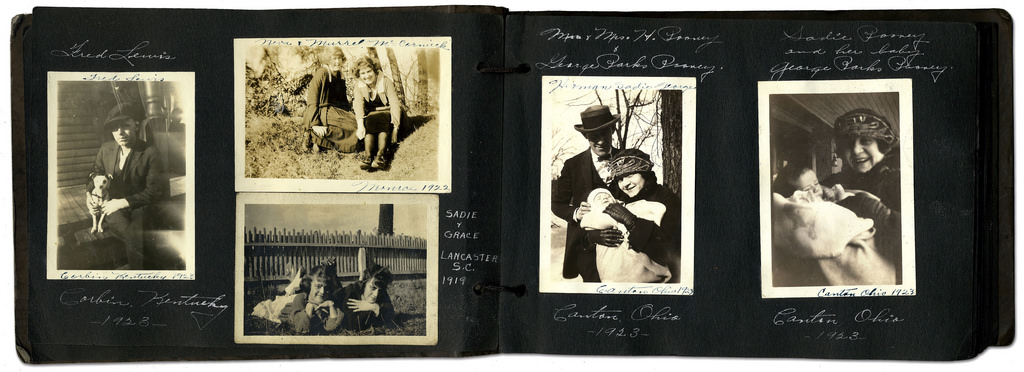
Digital images stored on mobile phones, uploaded on social media etc.

TASK
Write a 1000 word essay and answer this question: Whose Archive is it Anyway?
To answer this question you need to reflect on Photo-Archive’ talk by Patrick Cahill and Karen Biddlecoombe on Tue 4 June at the Société Jersiaise when we began the BUNKER ARCHAEOLOGY project. Here is a link to Intro to the Photo Archive
Research at least two photographers from the list below in the photo-archive and choose one photograph from each that illustrates the themes of Occupation or Liberation and include it in your essay
Read also the text by theorist David Bate: archives-networks-and-narratives_low-res, make notes and reference it by incorporating quotes into your essay to widen different perspectives. Comment on quotes used to construct an argument that either support or disapprove your own point of view.
Watch the Youtube clips below and consider the following sub-questions:
How do archives function?
What are their purpose?
How do archives act as repositories of cultural memories of the past?
In what way does photography perform a double role within archives?
Reference some of the artists and photographers mentioned in the David Bate’s text and use as examples.
Imagine how you will look in your archive of adulthood and what type/style of pictures you want them to be?
How will looking at archival material enrich your personal study?
In what way has looking at archives been a resourceful exercise?
What have you learned?
DEADLINE: Publish blog posts by Wed 19 June
INDEPENDENT STUDY > HOMEWORK
Choose at least one option
Explore public archives and find links to your research and project based around Political Landscapes. Make a blog post
1. Explore your own family/ personal archives over and make a blog post with some of the material and describe how it will inform and develop your Personal Investigation. Ask parents, grand-parents and other family members to look through photo-albums, letters, boxes etc.
2. Plan at least one photo-shoot and make a set of images that respond to your research above and/ or Personal Investigation.
Extra research/ reading
Dr Gil Pasternak, Senior Research Fellow in the Photographic History Research Centre (De Montfort University, Leicester), will be part of a BBC documentary film exploring what family photographs say about Britain’s post-war social history.
Watch this Youtube clip where Dr Kelly Wilder, Director of Photographic History Research Centre, De Montfort University, Leicester delivers an academic paper, ‘The View from Everywhere: Objectivity and the Photographic Archive’ at a symposium on Photographic Archives at the Getty Centre in Los Angeleswhere she talks about the notion of objectivity when it comes to the use of photographic images. Here is a Review of symposium on Photo_Archives and Objectivity
Here is an essay example from previous A2 student, Rosanna Armstrong
Work by photographers in the collection at the Societe Jersiaise Photographic Archive. Use for further research
Badoux, Ernest
Dunham, Percy
Smith, Albert
Guiton, Emile F
Foot, Francis
William Collie
Laurens, Phillip Morel
Ouless, Clarence P
De Faye, Francis George
Dale, Edwin
Baudoux, Ernest
Martin Wyness
Charles Hugo
Claude Cahun
Martin Parr (Liberation)
Michelle Sank (Insula)
Yury Toroptsov (Fairyland)
Tom Pope ( I am not Tom Pope, You are all Tom Pope)
Jonny Briggs (Unpalatable Truths)
Tanja Deman (Sunken Garden)
Lewis Bush (Trading Zones)
Martin Toft (Atlantus, Masterplan, The Seaflower Venture)
Critical image analysis
use Photo Literacy as a method of analysis: of TECHNICAL>VISUAL>CONTEXTUAL>CONCEPTUAL

Summer Project: “The Atlantic Wall”
Key dates :
6 June 2019 = 75th Anniversary of The D-Day Landings and the start of the liberation of Europe from Nazi Occupation
9 May 2020 = 75th Anniversary of Liberation of Jersey from Nazi Occupation

(Part of the Atlantic Wall)
Welcome back to school!…please check the details, information, guidance and instructions below
Week 2:
Mon 10 June Groups 12A and 12B
Tue 11 June Groups 12C and 12 E POSTPONED until Tues 18th June
On Location << all day photo-shoots at Les Landes / Noirmont>>
Each class will explore bunker sites on the West Coast of Jersey.
Outcome: A set of 200-300 images from photo-shoots
Schedule
8.45am Coach from Hautlieu School to Les Landes / Noirmont
9.15am-9.30am meet Tony Pike (CIOS) and discuss outline for the day’s activities / tasks / expections / orientation
10am-12pm Explore and document Battery Moltke / Lothringen
12.45pm -2.30 pm Explore and document Observation Tower and surrounding area of Les Landes / Noirmont
2.30 pm -.3.15pm Coach from Les Landes / Noirmont to Hautlieu School
Site Visit Tasks
1.Photograph : the surroundings, the structures, the contents and respond to available stimulus
2. Collect: anything that you can take away from from the environment without adversely affecting it
3. Write: your thoughts, feelings, learnings down in a notepad
4. Engage : with the place, structures, exhibits
5. Plan : how to develop your images, ideas and plan
Blog Tasks…
Create and publish a range of blog posts that reflect each stimulus point below…
Research and Influence : clearly show an understanding of the purpose and effect of The Atlantic Wall and look at a range of suitable artists that may influence your own creativity
Select and Edit : make an initial selection of your most successful / interesting images from the site visit and edit / enhance using Adobe Lightroom
Manipulate: get creative, begin exploring how you can include archival imagery, try some photo-montage and begin to think about how you can group your images (this will lead into your ‘zine production)
Present: a small range of possible outcomes on your blog using a range of display methods and print out your images / designs in the photography room…print out your images ready for our display board
Evaluate: your process, and critique your final outcomes by comparing and contrasting to your points of influence in Task 1
Independent Study Tasks
You must complete a range of photo assignments that continue and extend your experience of the fortifications at Les Landes / Noirmont during our site visits. Choose your area of study carefully by having a look at the interactive map below and then carefully photograph the location
Consider :
Composition…what are you trying to show, accentuate? Has the location got aspects of context or is it isolated? Is there a contrast or juxtapositon happening eg old/ new or urban / natural.
Exposure…employ over, under or balanced exposures. HDR? Long exposures for movement / night photography and take a tripod!
Lighting…use the times of the day or night to your advantage, think about shadows, colour casting (check WB!) USe the weather to your advantage for dramatic effect…rain, fog, storms etc
Lens…wide angle, cropped, standard, telephoto, macro etc…each have a different purpose and alloow you to explore depth of field and focus points too
References and inspiration
Please look carefully at these photographers to help you develop ideas for the forthcoming photo-shoot at Les Landes / Noirmont.
It is important that you have a personal plan of action, a vision and some ideas of your own in order to document the area and it’s structures creatively and effectively.
As soon as you can…develop a blog post to show your research and how your own visual ideas are developing
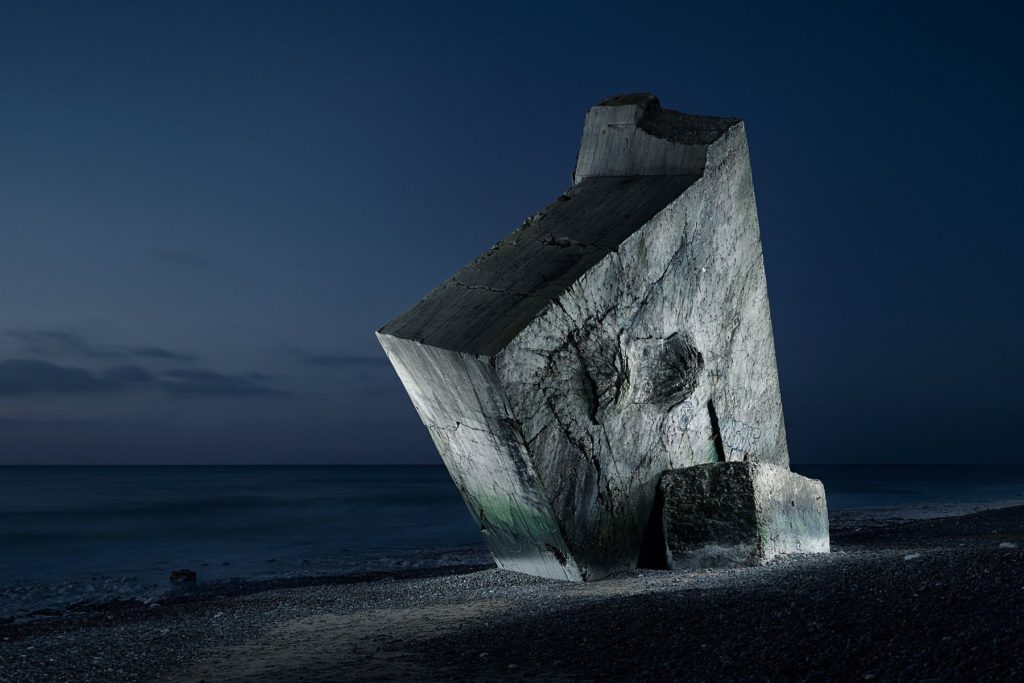
- Jonathan Andrew
https://www.jonathanandrewphotography.com/Projects/WWII-Relics/8
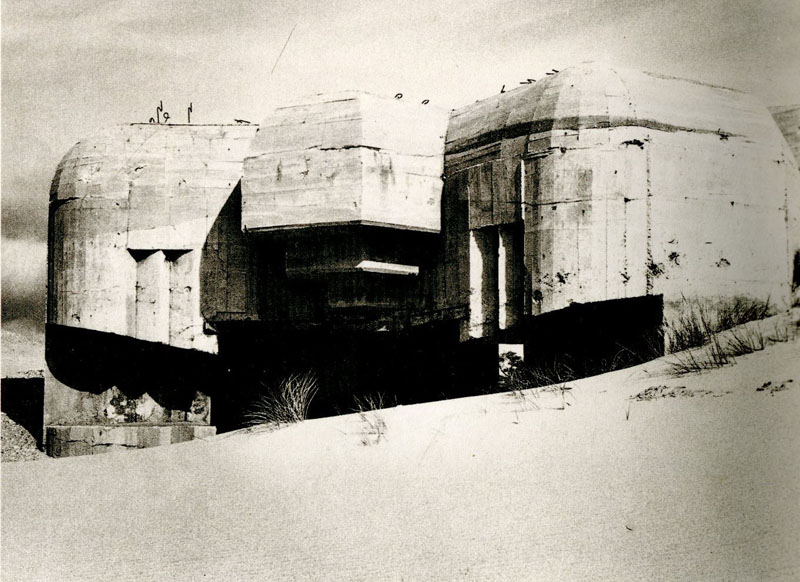
- 2 . Paul Virilio
https://thefunambulist.net/architectural-projects/unwall-bunker-archeology-by-paul-virilio

- 3. Dirk Reinartz—Deathly Still—Images from concentration camps
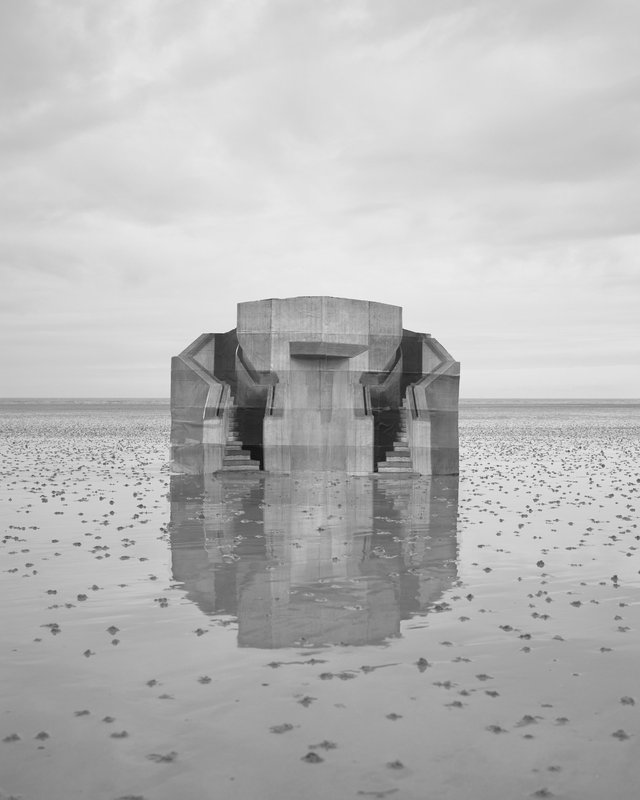
- 4. Noemie Goudal—conceptual photography, based loosely on bunker systems and other structures
http://noemiegoudal.com/observatoires/
5. Lynda Laird
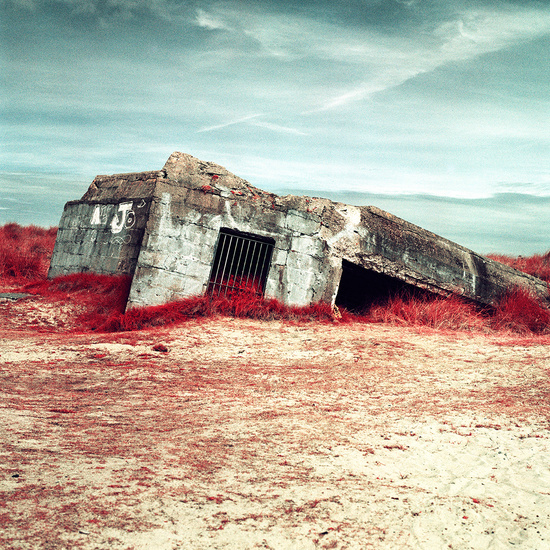
https://lynda-qbha.format.com/
Martin Roemers

Photo: Martin Roemers
https://www.lensculture.com/martin-roemers?modal=project-154443-relics-of-the-cold-war
Feel free to explore and find more examples !
Week 1: photograph chosen location and add images to your Lightroom catalogue, including all edits
Week 3: Either re-visit location from week 1 or choose a new location that compliments / contrasts with your original photo-shoot
Week 5: Complete tasks and develop ‘zine
https://www.jerseybunkermap.com/
The Atlantic Wall (German: Atlantikwall) was an extensive system of coastal defence and fortifications built by Nazi Germany between 1942 and 1944, along the coast of continental Europe and Scandinavia as a defence against an anticipated Allied invasion of Nazi-occupied Europe from the United Kingdom, during World War II. The manning and operation of the Atlantic Wall was administratively overseen by the German Army, with some support from Luftwaffe ground forces. The Kriegsmarine (German Navy) maintained a separate coastal defence network, organised into a number of sea defence zones.[
Hitler ordered the construction of the fortifications in 1942. Almost a million French workers were drafted to build it.[The wall was frequently mentioned in Nazi propaganda, where its size and strength were usually exaggerated. The fortifications included colossal coastal guns, batteries, mortars, and artillery, and thousands of German troops were stationed in its defences. When the Allies eventually invaded the Normandy beaches in 1944, most of the defences were stormed within hours. Today, ruins of the wall exist in all of the nations where it was built, although many structures have fallen into the ocean or have been demolished over the years.

Organisation Todt (OT) was a civil and military engineering organisation in Nazi Germany from 1933 to 1945, named for its founder, Fritz Todt, an engineer and senior Nazi. The organization was responsible for a huge range of engineering projects both in Nazi Germany and in occupied territories from France to the Soviet Union during World War II. It became notorious for using forced labour. From 1943-45 during the late phase of the Third Reich, OT administered all constructions of concentration camps to supply forced labor to industry.
Independent Study
Personal Photo Assignments : Locations and possibilities
Bunkers / Gun Emplacements…
Towers…
Tunnels…
Slave worker / forced worker Labour Camps…
Sea defences / walls / other fortifications…
Other buildings connected to WW2 Occupation / Liberation…and surrounding landscapes too
People…the survivors, the resistance, the collaborators, the escapeees
Objects and artefacts…
Liberation…
Legacy…
Remembrance…
Useful Links for you…
https://www.jerseybunkertours.com/
https://jerseyeveningpost.com/news/2019/05/09/an-end-to-occupation/
https://www.theislandwiki.org/index.php/Noirmont
https://en.wikipedia.org/wiki/Hohlgangsanlage_tunnels,_Jersey
AS TO A2
This is officially the end of my AS work and any work beyond this point is entirely A2 content
